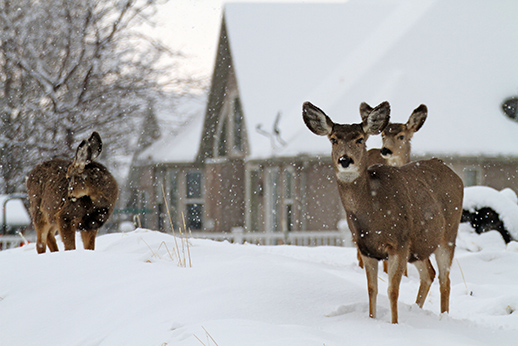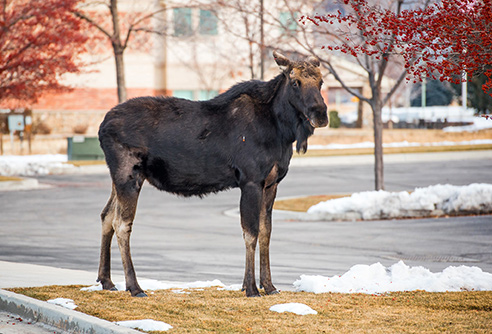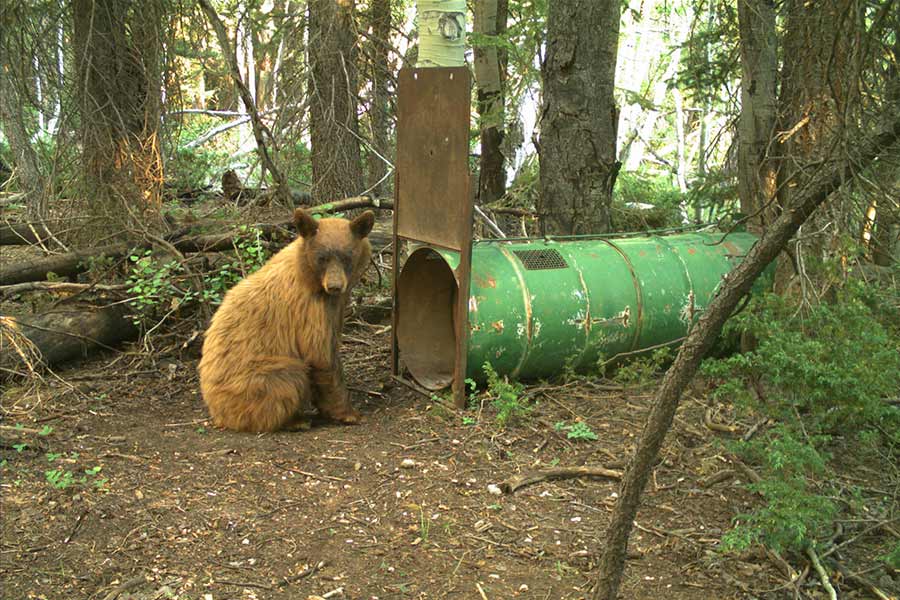
Utah’s growing population and related urban expansion have increased the number of wildlife encounters across the state in recent years. However, not every encounter or animal sighting needs to be reported to the Utah Division of Wildlife Resources (the agency that manages the state’s protected fish and wildlife).
Wildlife encounters can happen year-round
Wildlife encounters during the summer often occur when people are hiking or camping in the mountains or canyons, which are natural wildlife habitat areas. However, these encounters are also common in cities and other urban areas during the winter months. As snow falls in the mountains, deer, moose and other big game species move to lower elevations looking for food. Cougars, which prey mostly on deer, often follow the deer into the valleys.

While it may seem like cougars and other wildlife are migrating into neighborhoods more frequently, it is actually a combination of a few things:
- Increased building in the foothill areas and canyons (where wildlife are naturally located).
- An increase in the number of doorbell and security cameras on people’s homes (which capture more wildlife sightings that previously went undetected).
If you do happen to see wildlife in your neighborhood or yard, you should always keep your distance for your own safety and for the safety of the animal. Getting too close to a wild animal can cause the animal to feel threatened, and if it feels threatened, it will sometimes act aggressively to protect itself. And because it’s harder for some wildlife to find food in the winter, they need to conserve their energy in order to survive. While a one-off encounter may not be fatal, repeatedly disturbing or having dogs chase species such as moose and deer can cause wildlife to use up some of the essential fat reserves and energy they need to survive the winter.
Keep wildlife wild by not feeding them
Another important way to avoid conflicts and to prevent harming wildlife is to make sure never to feed them. While it is not illegal to feed wildlife — except in cities that have ordinances against it — there are several reasons that it is highly discouraged, including:
- Public safety concerns (including drawing those animals to residential neighborhoods and roadways)
- The spread of chronic wasting disease among deer, elk and moose
- Potential harm to the wildlife from introducing foods not in their diets, particularly during winter months
 Whenever someone feeds wildlife, those animals will often return to that area in search of food. These areas are often near highways and towns. Concentrating deer and other wildlife near inhabited areas can sometimes result in increased traffic accidents and other human/wildlife conflicts. Attracting deer to your property through feeding can also attract predators, like cougars that follow deer herds. And while deer and moose are not predators, they are still wild animals and can be aggressive, particularly around dogs.
Whenever someone feeds wildlife, those animals will often return to that area in search of food. These areas are often near highways and towns. Concentrating deer and other wildlife near inhabited areas can sometimes result in increased traffic accidents and other human/wildlife conflicts. Attracting deer to your property through feeding can also attract predators, like cougars that follow deer herds. And while deer and moose are not predators, they are still wild animals and can be aggressive, particularly around dogs.
When should I report a wildlife encounter?
Any time you are injured by wildlife, you should receive immediate medical attention if needed, and report the incident to the DWR. Similarly, any time you encounter aggressive wildlife, you should report it to the nearest DWR office:
- Cedar City: 435-865-6100
- Ogden: 801-476-2740
- Price: 435-613-3700
- Salt Lake City: 801-538-4700
- Springville: 801-491-5678
- Vernal: 435-781-9453
After hours or on weekends, please call your local police department or county sheriff’s office, who can contact a conservation officer to handle the situation.
Here is a simple breakdown of some other scenarios that should be reported to the DWR:
Cougars
Cougars can be found throughout Utah, usually in the foothill and canyon areas, but also sometimes down in the valleys — especially during the winter months when they follow food-seeking deer to lower elevations. You should report a cougar sighting if:
- It has killed something in a neighborhood or yard.
- It exhibits aggressive behavior.
- It appears several times on your security cameras.
If you capture footage of a cougar on security cameras one time or see one from a distance in foothill areas, you do not need to report it. One-time sightings of cougars are typically when the animal is moving through an area, and it has often left by the time DWR biologists and conservation officers can respond. Learn more about preventing conflicts with cougars.
Bears
 Black bears are the only species of bear currently found in Utah. Similar to cougars, they can also be found in the foothill areas, canyons and other similar habitats throughout Utah. If bears are in these areas, they should only be reported if they are being aggressive or if they are getting into trash, fruit trees or causing damage.
Black bears are the only species of bear currently found in Utah. Similar to cougars, they can also be found in the foothill areas, canyons and other similar habitats throughout Utah. If bears are in these areas, they should only be reported if they are being aggressive or if they are getting into trash, fruit trees or causing damage.
However, you should report a bear that has wandered into lower-elevation areas and is within city limits or in heavily-populated areas. See our Wild Aware Utah bear page to learn ways to prevent attracting a bear to your yard.
Bears typically go into hibernation from roughly November to March, so you likely won’t see one during the winter.
Moose
Moose are also commonly found in the foothill areas since that is their natural habitat. You should report a moose that has wandered into lower-elevation areas and is within city limits or heavily-populated areas, so the DWR can relocate the animal. If moose aren’t relocated, they can stay in an area for a long time and potentially injure someone or damage property. Urban environments, which include fences and vehicles, can be unsafe for moose. Avoid approaching moose or attempting to “herd” them out of yards or roads. Moose can be very aggressive, especially around dogs. Learn more about moose here.
Deer
You should only report a deer sighting in a neighborhood if the animal is acting aggressively. Buck deer can often be aggressive during their breeding season, which takes place in November. If a deer is hit and killed by a vehicle in a neighborhood or is found dead in a yard or park, call your nearest DWR office to report it, so crews can remove the dead animal. You can also report dead deer on roadways through the Utah Roadkill Reporter app, which helps DWR biologists gather more data about wildlife migrations in Utah.
The DWR also launched the Urban Deer Program in 2014 as a way to give cities the ability to deal with ever-increasing deer/human conflicts in expanding urban areas. Learn more about the program on the DWR website.
See our Wild Aware Utah mule deer page to learn more about deer in Utah and what you can do to prevent conflicts.
Birds of prey
During the winter, Utahns may often see hawks, eagles and other birds of prey on the sides of the road. While it may seem like these animals have been injured, typically, they have gorged themselves on roadkill and are unable to fly for a period. You only need to report these birds if:
- They are in the roadway (and at risk of being hit by a vehicle)
- They have been in the same spot for over 12 hours.
- They have an obvious injury.
Golden eagles at the side of the road
For more wildlife-related safety tips and information, visit the Wild Aware Utah’s “Be Aware” pages for different species.

